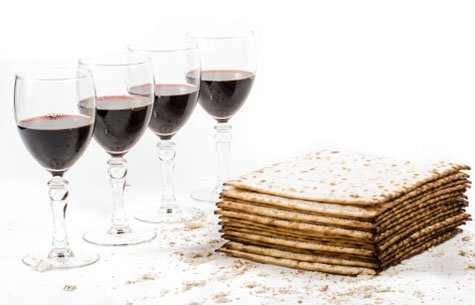
Once again Pesach is upon us, but what a difference a year makes! While Covid continues to wreak havoc across the globe, its impact on our day-to-day lives continues to thankfully diminish and many folks are looking forward to the Pesachs of yesteryear, with large gatherings of family and friends, along with travel to different locales for a change of pace, scenery and weather. While all a good thing, it is my fervent hope that we remember the lessons of the past year(s) and continue to take pleasure in the simple enjoyment of close  family and friends, while reaching out to assist our fellow Jews for whom the chag may not be as joyous for a host of reasons.
family and friends, while reaching out to assist our fellow Jews for whom the chag may not be as joyous for a host of reasons.
As Pesach is a celebration of the Jewish people coming together a nation for the first time, this is an easy idea to get behind with everything we have got. Personally, I find choosing wine for our sedarim a worthy endeavor to apply some effort too, especially given the teaching by our sages that wine gladdens the heart and there is no joy without wine (and meat). With wine such an integral part of the Pesach holiday, physical and spiritual aspects combined, my hope is that this annual guide makes the task easier and hopefully helps in enhancing the strangely unique seder we are each about to undergo, regardless of our personal circumstances. Whether you are back to a large family gathering or continuing to celebrate on a smaller scale, take the opportunity to recognize all you have and take some time to contemplate the nature of the holiday – it will serve to enhance things dramatically. Now, with the philosophical messaging out of the way, onto wine!
Busy Times
Typically, the weeks leading up to Pesach are the US kosher wine industry’s busiest, with more kosher wine purchased during this period than the rest of the year combined (in Israel, Rosh Hashanah is nearly as busy a buying season as Pesach and wine buying is also more liberally spread out through the year). As we slowly return to some semblance of normal, buying wine for Pesach remains one of the best parts of Pesach prep for every committed wine lover and this year has yielded some new and exciting wines for every budget and palate preference. However, even though the more than 4,500 different kosher wines being produced annually includes almost 100 disparate varieties of “Fake Wines” like wines with Cream in their name, Manischewitz, variations of Yayin Patishim and of course the Blue Bottle Abomination, there remain far too many labels for any sane human being to wade through.
Elevated Stress Levels
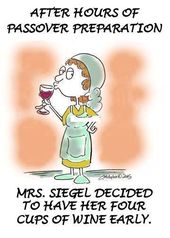 Every year we talk about the elevated stress levels brought on by cooking commercial grade amounts of brisket and matzah balls while attempting to eradicate every speck of dirt from the inside of your oven with a toothbrush with the goal of ensuring Seder wine selection won’t be an added source of stress. With another year of pandemic-related stress under everyone’s belts, I feel more strongly than ever before that wine selection should be as easy, simple and enjoyable as possible. However, as this guide is used by most readers throughout the year as a benchmark for which wines to acquire and all the potential pitfalls remain (and then some), we are going to remain focused on the usual matters the guide is mean to help alleviate.
Every year we talk about the elevated stress levels brought on by cooking commercial grade amounts of brisket and matzah balls while attempting to eradicate every speck of dirt from the inside of your oven with a toothbrush with the goal of ensuring Seder wine selection won’t be an added source of stress. With another year of pandemic-related stress under everyone’s belts, I feel more strongly than ever before that wine selection should be as easy, simple and enjoyable as possible. However, as this guide is used by most readers throughout the year as a benchmark for which wines to acquire and all the potential pitfalls remain (and then some), we are going to remain focused on the usual matters the guide is mean to help alleviate.
With wine such an integral part of the Pesach experience, the massive number of choices can create a particularly stressful shopping experience as one contemplates the near-endless number of choices on the shelves or webpage of your favorite retailer. Exacerbating the issue are several mitigating circumstances including the sheer number of mediocre-at-best available wines (along with an unacceptable amount of true drek) and the unfortunate tendency of many retailers to part you from your hard-earned shekels by selling these less than worthy wines. Typically stemming from a lack of knowledge, occasionally more sinister reasons are at play so, caveat emptor. Other aggravating obstacles include lack of vintage transparency and the oenophilic “bait and switch” – advertising great deals for allocated wines without having them in stock and then selling you copious amounts of sub-par wines. Adding to the fun is the terrible fact that many stores and online purveyors continue to sell wines that are so far past their optimum drinking windows that it’s practically criminal.
Help is Here
 With a desire to help reduce stress levels in any way I can, I have once again curated my Pesach Wine Buying Guide from among the thousands of available options. Hopefully the Guide will simplify your wine shopping and free you to spend time preparing the rest of chag while spending time with your family and other loved ones.
With a desire to help reduce stress levels in any way I can, I have once again curated my Pesach Wine Buying Guide from among the thousands of available options. Hopefully the Guide will simplify your wine shopping and free you to spend time preparing the rest of chag while spending time with your family and other loved ones.
The Guide covers my top recommendations for wines in the following five price tiers: (1) Under $18, (2) between $18-29.99, (3) between $30-49.99, (4) Over $50 and (5) Moshiach Wines. As most of my readers know, Moshiach Wines are wines that I would proudly serve the Moshiach, were I ever sufficiently deserving for him to grace my Seder table.
Many of the wines on this list will not come as a surprise to my regular readers given their perennial appearance over the years resulting from the consistent excellence of their producers and the talent of the applicable winemaker. As years go by and the quality and quantity of top-notch kosher wines grows, the potential wines for this list gets longer, increasing the difficulty in providing this highly curated list (listing every good wine would defeat the entire purpose of the list). Representing less than 5% of all commercially available kosher wines, the list should go a long way in easing the pain of sifting through all your options. With the quality of white wines increasing year over year, there are more white wines on the list than in prior years, especially on in the lower price ranges. If you are one of those unfortunate and self-proclaimed “I don’t drink white wine” people, please take this as an opportunity to try something new – I promise you won’t be disappointed.
The Fine Print
As a transactional lawyer with over 20 years of deal-making under my belt, it shouldn’t surprise anyone that a list of this magnitude comes with some fine print and a few important caveats.
 The Guide isn’t intended to be a comprehensive list of every wine I believe worthy of your consideration. It represents a selection of the better wines available across different pricing tiers; each of which I recommend and believe worthy of your Pesach table. As I have written far less over the past year than ever before, I have included more wines than usual on the list to compensate. Of course, all wines remain subject to their recommended drinking window.
The Guide isn’t intended to be a comprehensive list of every wine I believe worthy of your consideration. It represents a selection of the better wines available across different pricing tiers; each of which I recommend and believe worthy of your Pesach table. As I have written far less over the past year than ever before, I have included more wines than usual on the list to compensate. Of course, all wines remain subject to their recommended drinking window.- Broadly speaking, the majority of wines from Dalton, ElviWines, Flam, Gvaot, Recanati, Tzora and Yaacov Orayh are worth buying, even if they aren’t listed below. With a few rare exceptions I didn’t repeat any wines listed in last year’s guide and many of last year’s wines are still available on the shelves and remain in top drinking condition so check out last year’s list for additional suggestions and/or vintages.
- Some wines may only be available either in Israel or the US and I have tried to mark them as such. While there remain a number of wines that remain available only in their country of production (e.g. Four Gates and Shirah in the US and a number of French options in Europe), the vast majority of recommendable Israeli wines are imported to the US these days (Shmita excepting) and most of the Herzog/Royal wines that were formerly “US Only” wines, are exported to Israel, making this list more useful across the broadly disparate geographic location of my 11,000 subscribers.
- Due to the disparate geographical disbursement of my reader base, the listed vintages may be different depending on which part of the world your shopping cart is located in (although vintages tend to also shift from local retailer to retailer and distributor to distributor, depending on how much of the prior vintage they have left in stock). Especially for Israeli wines, different vintages are available in Israel and outside of Israel.
- It is always best practice to consult me before buying a recommended wine from a different vintage but in this case, given the fluctuation in quality of recent vintages and potential shipping/storage issues, I’d be even more careful than usual when utilizing this list to purchase non-listed vintages.
- As with most goods, wine prices have dramatically escalated over the last 12 months, so wines in each tier have often moved up to the more expensive slot. Additionally, prices fluctuate wildly from location to location, so when determining the price tier for each wine I typically average among a number of US online and brick and mortar options to achieve what is hopefully an average price for the various wines. However, listed wines in your local market may not always fall exactly within the listed price points (online price-checking is always a good idea, as is asking retailers to match listed prices).
- To ensure the practical functionality of this list, I have not included wines only available to wine club members (e.g., Covenant’s Landsman, Hajdu’s Guild, Herzog Tasting Room) and have significantly reduced the number of listed wines that aren’t generally available or have sold out (e.g., Four Gates wines).
Seder Drinking Conundrum
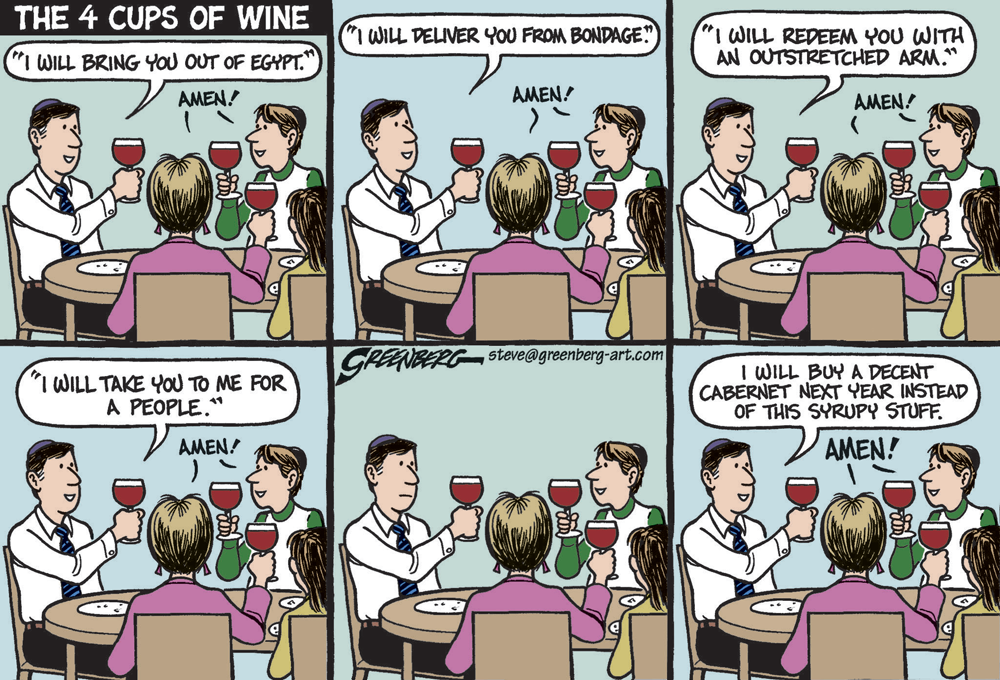 Despite occupying a top spot on any oenophile’s list of favorite customs, the tradition to consume four full cups of wine at the Seder can also present a number of potential issues that can be prevented with a bit of advance thought and planning.
Despite occupying a top spot on any oenophile’s list of favorite customs, the tradition to consume four full cups of wine at the Seder can also present a number of potential issues that can be prevented with a bit of advance thought and planning.
First and foremost is that four full (or even partially full) cups of is a lot of wine to consume at one sitting, especially given the fact that the first two cups are typically imbibed on an empty stomach. Another issue stems from the tradition of using a silver goblet for Kiddush (and the rest of the cups). While the easy solution of pouring the wine into a proper wine glass immediately following the recital of Kiddush works beautifully on a regular Shabbat or chag, the lengthy Hagada ensures far more contact with the silver during the Seder. Other potential issues include the common traditions of using only red wine and avoiding mevushal wines during the Seder.
With the Seder representing one of the most important meals on the Jewish calendar, people try to have the nicest (and typically the most expensive) wines possible, creating yet another potential conundrum. Despite being among the kosher wine world’s best, the currently available high-end wines from Bordeaux, Italy, Spain, Israel and California are unlikely to be properly appreciated giving the hurried manner in which most of the Seder’s four cups are mandated to be consumed. Many of the better wines are full-bodied, oak aged and boldly flavored, attributes not very conducive to Seder drinking. Between the empty stomach with which most people approach the first two cups, the halachic requirement to consume nearly an entire cup of wine rather rapidly and the oft-additional stress from trying to corral hyperactive children; most sedarim are unlikely to offer ideal conditions for enjoying such magnificent wines. That said, if your current circumstances allow for a leisurely seder enhanced by the finest wines in your cellar – go for it. The spiritual aspects of wine sanctifying our table and seder-night experience would make using your best bottles to elevate the exalted experience as good a use of Moshiach wines as I could conjure.
The Perfect Solution
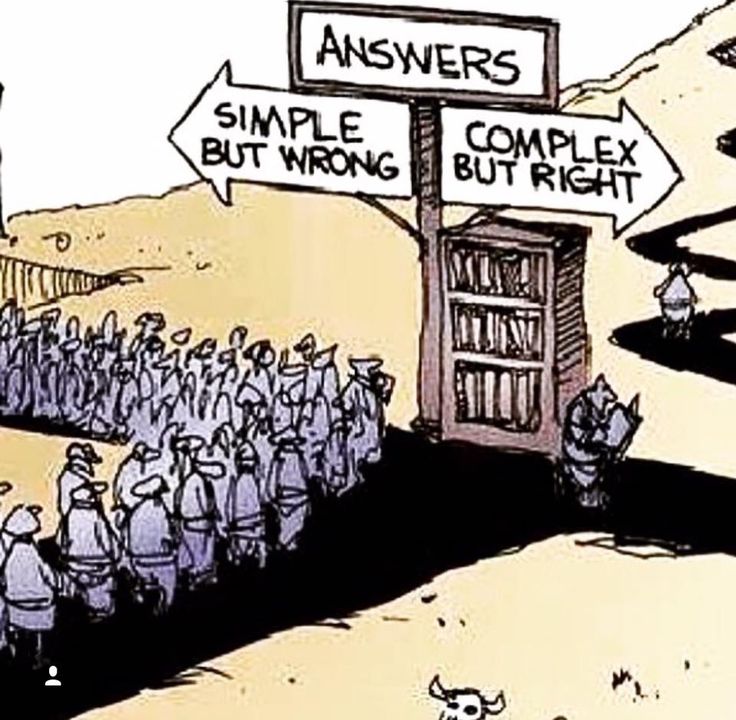 So, unless you are among the rarified company enjoying a seder conducive to such wines, I suggest saving the more expensive wines for leisurely drinking during Shulchan Aruch and the plethora of subsequent holiday meals, while finding other worthy options for the four cups. Being a traditionalist, my personal custom is sticking with red wines for all four cups, while using a few basic principles to choose the proper wines. Many folks like to use rose as a good compromise and with the genre’s popularity soaring, many options are already available. However, the quality of kosher rose has been severely declining over the last 4-5 years and the 30 or so samples I have tasted to date have done nothing to disprove me of the view that another mediocre crop of rose is upon us.
So, unless you are among the rarified company enjoying a seder conducive to such wines, I suggest saving the more expensive wines for leisurely drinking during Shulchan Aruch and the plethora of subsequent holiday meals, while finding other worthy options for the four cups. Being a traditionalist, my personal custom is sticking with red wines for all four cups, while using a few basic principles to choose the proper wines. Many folks like to use rose as a good compromise and with the genre’s popularity soaring, many options are already available. However, the quality of kosher rose has been severely declining over the last 4-5 years and the 30 or so samples I have tasted to date have done nothing to disprove me of the view that another mediocre crop of rose is upon us.
Despite the less than adequate conditions mandated by our traditions and extra important given the circumstances we all find ourselves in, Seder night is one of the most exalted evenings we get to spend in G-d’s company, while celebrating our freedom from oppressive slavery and the coalescing of the Jewish People into a nation with collective responsibility for one another. As such top-quality wine is still a pre-requisite. As much of the world reverts back to large(r) family gatherings with friends and family, the wine-range of potential palate preferences and extended sitting calls for a diverse range of wines. Therefore, I focus on affordable medium bodied quality wines that are highly approachable and enjoyable even without any oenophilic sophistication. Over the years, my “go-to” Seder wines have included Israeli Petite Sirah from Vitkin and Recanati, entry-level Spanish & Italian wines from ElviWines and Terra di Seta respectively, some of the well-priced newer options from Bordeaux and the multiple lovely Pinot Noir wines from around the world. To the extent you are looking for well-priced and versatile white (or Rosé); good bets will be rosé from Dalton or Hajdu; Sauvignon Blanc from Yarden, Covenant and Goose Bay, Pinot Grigio from Dalton or Yarden and Rieslings from Carmel, Kishor or Vitkin.
Parting Advice
During this busy buying season, retailers pull out all the stops to bring in your dollars with big sales everywhere. Between the increasing competition and online availability of most top-notch kosher wines, most wine merchants will match any published price, so always ask your favorite retailer to match the prices you have seen elsewhere and, if you aren’t happy with the price – ask for a discount.
With all the explanations behind us, I present my annual
Pesach Wine Buying Guide
Under $17.99
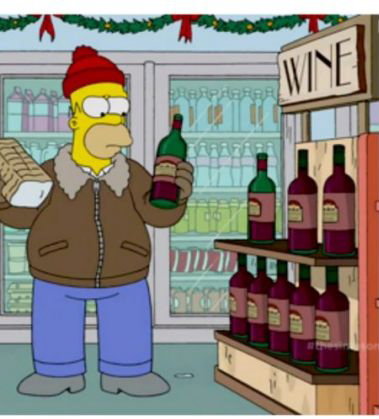 Rising prices have somewhat decimated this list, with many previously well-priced options moving up to the next price point. However, there are still a number of good options on this list, each of which yields a good and enjoyable wines, albeit these wines aren’t complex or cellar worthy (with a few exceptions). With oak barrels representing a significant percentage of a wine’s cost (actual cost and the time-value of aging), many of these wines have spent little to no time in oak contributing to their lower prices. Along with focusing on “Safe Bet” wineries, varieties less popular than Cabernet Sauvignon, Merlot, Syrah and Chardonnay tend to be cheaper given their relative lack of familiarity. As such, Petite Sirah, Carignan, Cabernet Franc, Petit Verdot, Grenache, Roussanne and Gewürztraminer will usually provide better bang for your buck and are good places to look for bargains.
Rising prices have somewhat decimated this list, with many previously well-priced options moving up to the next price point. However, there are still a number of good options on this list, each of which yields a good and enjoyable wines, albeit these wines aren’t complex or cellar worthy (with a few exceptions). With oak barrels representing a significant percentage of a wine’s cost (actual cost and the time-value of aging), many of these wines have spent little to no time in oak contributing to their lower prices. Along with focusing on “Safe Bet” wineries, varieties less popular than Cabernet Sauvignon, Merlot, Syrah and Chardonnay tend to be cheaper given their relative lack of familiarity. As such, Petite Sirah, Carignan, Cabernet Franc, Petit Verdot, Grenache, Roussanne and Gewürztraminer will usually provide better bang for your buck and are good places to look for bargains.
Most of the wines on these lists qualify as YH Best Buys (wines especially worthy of your hard-earned cash).
- Cantina del Redi Pleos Toscana Sangiovese, 2019
- Cantina Giuliano, Vermentino, 2020
- Château Canteloup, Medoc, 2019
- Château Genlaire, Bordeaux, 2019
- Château Trijet, Bordeaux, 2020
- Dalton, Estate, Rose, 2021
- Dalton, Fume Blanc, 2020
- Elvi, Vina Encina, White, 2019 (also the 2018 Red)
- Elvi, Herenza, White, 2019 (f/k/a InVita)
- Elvi, Herenza, Rioja (Semi-Crienza), 2019 (white/blue label)

- Essa, Altira, South Africa, 2021
- Golan Heights Winery, Gilgal (Gamla), Brut, N.V.
- Golan Heights Winery, Gilgal (Gamla), Cabernet Sauvignon-Merlot, 2019
- Goose Bay, Sauvignon Blanc, 2021
- Herzog, Baron Herzog, Cabernet Sauvignon, 2019 [mevushal]
- Herzog, Lineage, Sauvignon Blanc, 2020 [mevushal]
- MAD Winery, Aleph, Blaufrankisch, 2015
- O’Dwyers Creek, Sauvignon Blanc, 2020
- Pacifica, Riesling, 2018
- Terra di Seta, Chianti Classico, 2019
- Recanati, Yasmin, White, 2021
- Recanati, Galil, Sauvignon Blanc, 2021
- Recanati, Rose, 2021
- Recanati, Galil, Syrah, 2020 (also the Petite Sirah [Israel])
$18-29.99
As the average price of a quality bottle of kosher wine continues to surge (and this tier containing many previous members of the under $18 range), it’s refreshing to find a number of wineries valiantly trying to hold their ground at affordable. While most great wines cost more than $30, there are plenty of great ones here. In general, I find Carmel, Dalton, ElviWines, the Golan Heights Winery and Recanati to be consistent players in price range.
- By Teperberg, Grenache, 2020 (Assistant Winemaker Dani Friedenberg wine)
- Carmel, 4 Vats, Mediterranean, Shomron, 2019
- Carmel, Appellation, Merlot, 2017 (also the 2018 Gewurztraminer)
- Château D’Arveyres, Bordeaux, 2019

- Château Greysac, Medoc, 2019
- Château Signac, Cotes du Rhone, 2020
- Covenant Sauvignon Blanc, Red C, 2021 (also the 2020 Mensch)
- Dalton, Alma, Rose, 2021
- Dalton, Reserve, Sauvignon Blanc, 2020
- Dalton, Asufa, Wild One, Chenin Blanc, 2020 [Israel]
- Dalton, Asufa, Levintina, 2019
- Dalton, Alma, Red Blend, 2019
- Drimia, Sauvignon Blanc, 2020 + 2021 [Israel]
- Elvi Wines, Cava, Brut, N.V.
- Elvi Wines, Herenza, Rioja (Crianza), 2018 (Black Label)
- Flechas De Los Andes, Malbec, 2021
- Fura, Chenin Blanc, 2020 [Israel]
- Goose Bay Pinot Grigio, 2021
- Gush Etzion, Lone Oak, Sauvignon Blanc, 2020 (also the Viognier)
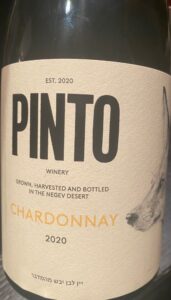
- Hagafen Dry Riesling, 2021
- Herzog, Variations, Cabernet Sauvignon, Five, 2019 (also the 2019 American Oak) [mevushal]
- Koenig Brut, Cremant d’Alsace, N.V.
- La Foret Blanche, Talpiot, Red, 2019
- Les Lauriers des Rothschild, Montagne Saint-Émilion, 2019
- Pescaja, Solei Terre Alfieri, Arneis, 2019
- Pinto, Chardonnay, 2020 [Israel]
- Psagot, Sauvignon Blanc, 2020 (also the Gewurztraminer & Viognier)
- Psagot, Sinai, Red, 2020
- Ramon Cardova Albarino, 2019
- Recanati, Med Blend, White, 2019
- Recanati, Single Vineyard, Chardonnay, Manara, 2019
- Recanati, Single Vineyard, Chenin Blanc, 2020 [Israel]
- Sheldrake Point, Dry Riesling, Finger Lakes, 2020
- Shiloh, Rose, 2021
- Shiloh, Sauvignon Blanc, 2021
- Teperberg, Inspire, 150th Anniversary, White Blend, 2021
- Teperberg, Essence, Pinot Gris, 2020 [Israel]
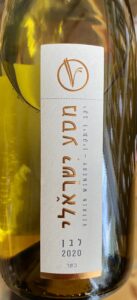
- Teperberg, Imagine, Red Blend (Cabernet Sauvignon, Merlot, Petit Verdot & Cabernet Franc), 2020
- Teperberg, Essence, Cabernet Sauvignon, 2018
- Tura, Snow, 2020
- Tura, Mountain Vista, Heartland, 2020
- Tzora, Judean Hills, White, 2020 (also the Red)
- Vitkin, Collector’s Edition, Dry Gewurztraminer, 2020 (also the 2020 Riesling)
- Vitkin, Israel Journey, White, 2020 (also the 2020 Red & 2021 Rose)
- Weinstock, Cellar Select, Cabernet sauvignon, 2019 (also the 2019 Chardonnay) [mevushal]
- Ya’acov Oryah, Light from Darkness, 2019
- Ya’acov Oryah, Queen of Hearts, 2020
- Yaffo, Rose, 2021
- Yatir, Darom, White, 2020
- Yatir, Mount Amsa, White, 2019 (also the 2018 Red)
$30-49.99
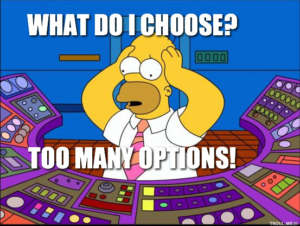 While a lot of good options sit in this category, many of them really should be priced in the lower range but have crept up in price for no justifiable reason. It’s harder to sell wines in this price range than the one above or below it. It’s nearly impossible to find a YH Best Buy on this list. As with most higher-end wines, especially those with a year or more of barrel aging, these need time to open up (often the current vintage should be regulated to a few years of aging since it simply isn’t ready for primetime). In any event, do yourself a favor and get a decanter to ensure that you are obtaining maximum benefit from these wines in the event that you don’t or cannot cellar them before enjoying.
While a lot of good options sit in this category, many of them really should be priced in the lower range but have crept up in price for no justifiable reason. It’s harder to sell wines in this price range than the one above or below it. It’s nearly impossible to find a YH Best Buy on this list. As with most higher-end wines, especially those with a year or more of barrel aging, these need time to open up (often the current vintage should be regulated to a few years of aging since it simply isn’t ready for primetime). In any event, do yourself a favor and get a decanter to ensure that you are obtaining maximum benefit from these wines in the event that you don’t or cannot cellar them before enjoying.
- Aura di Valerie, Del Beneventano, Aglianico, 2019
- Cantina Sanpaolo, Aglianico, Irpinia, 2018
- Carmel, Mediterranean, 2018
- Carmel, Single Vineyard, Syrah, Ein Zeitan, 2018
- Castellare di Castellina, Chianti Classico, 2019
- Champagne Drappier, Brut Nature, Zero Dosage, Rose, N.V.
- Champagne Drappier, Carte D’ Or, Brut, N.V.
- Château Guiraud, G, 2019 (Dry)
- Château Royaumont, Lalande De Pomerol, 2018
- Château Tour Seran, Medoc, 2019
- Covenant, Tribe, 2020
- Dampt Freres, Chablis, Brechain, Premier Cru, 2018
- Drimia, Sahar, Red Blend, 2019
- Domaine De Panquelaine, Sancerre, 2020
- Domaine Joost de Villebois, Pouilly Fume, 2020
- Etoiles de Mondorion, Saint Emilion, 2019
- Flam, Blanc, 2021
- Flam, Classico, 2019
- Gito, Uphaz, 2020
- Golan Heights Winery, Yarden, Blanc de Blanc, 2014
- Golan Heights Winery, Yarden, Brut, Rose, 2014
- Gvaot, Dances in White, 2021 (also the 2019 Vineyards Dance Red)
- Gvaot, Gofna Reserve, Bittuni, 2019
- Gvaot, Gofna Reserve, Cabernet Sauvignon – Chardonnay, 2020
- Hagafen Cabernet Sauvignon, 2018
- Hagafen, Prix Reserve, Sauvignon Blanc, 2018 (also the 2019 Chardonnay)
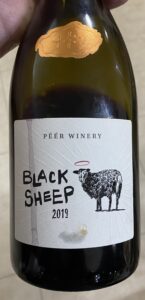
- Hajdu, Zinfandel, 2020 (also the 2020 GSM) [US]
- Herzog, Eagle’ Landing Pinot Noir, 2019 (also the 2019 Special Reserve Pinot)
- Herzog, Sauvignon Blanc, Acacia Barrel Series, 2020 (also the 2017 Paso Syrah)
- Herzog, Special Reserve, Cabernet Sauvignon, Alexander Valley, 2019 (also the 2019 Lake County)
- Herzog, Special Reserve, Merlot, 2018 (also the 2019 Russian River Chardonnay)
- Jean Marc Brun Bourgogne Hautes-Cotes de Nuits, 2019 (also under Jean Philippe Marchand label)
- Jean-Pierre Bailly, Pouilly-Fume, 2019
- Les Marrionniers, Chablis, 2019
- Les Roches de Yon-Figeac, Saint-Émilion, 2018
- Midbar, Grenache, 2020 [Israel]
- Lueria, Roussanne, 2020 (also the 2020 Pinot Grigio & Unoaked Chardonnay)
- Nana Chenin Blanc, 2019
- Netofa, Latour, White, 2020
- Netofa, Tel Qasser, Red, 2019 (also the 2019 White)
- Netofa, Tel Qasser, Moursyr, 2019
- Pavillon du Vieux Chantre, Puisseguin-Saint-Emilion, 2019
- Pe’er Winery, Black Sheep, Red Blend, 2019 [Israel]
- Pe’er Winery, Chardonnay, 2020 [Israel]
- Pescaja, Soliter, Barbera d’Asti, 2020
- Pescaja, Tuké, Terre Alfieri, Nebbiolo, 2019
- Psagot, Edom, 2019
- Psagot, Cabernet Franc, 2020
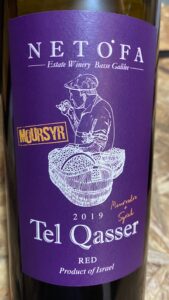
- Recanati, Mediterranean Reserve, Petite Sirah, 2018 (also the 2018 Wild Carignan)
- Recanati, Special Reserve, White, 2018
- Shirah, Black & Blue, Syrah, 2019 (also the 2020 Bro-Deaux Sauvignon Blanc) [US]
- Shiran, Semillon, 2019 (also the 2020 Riesling)
- Terra di Seta, Chianti Classico, Riserva, 2016
- Terra di Seta, Chianti Classico, Gran Selezione, Assai, 2016
- Tura, Mountain Heights, Shiraz, 2018
- Tzora, Shoresh, Red, 2019
- Vitkin, Carignan, 2019 (also the 2019 Petite Sirah & 2020 Pinot Noir)
- Vitkin, Collector’s Edition, Grenache Blanc, 2020
- Vitkin, Collector’s Edition, Grenache Noir, 2019 [Israel]
- Vitkin, Single Vineyard, Cabernet Franc, 2018
- Ya’acov Oryah, Alpha Omega (Orange), Chardonnay, 2019
- Ya’acov Oryah, Black Pinecone, Pinot Noir, 2019 [Israel]
- Ya’acov Oryah, Late Harvest, Viognier, 2020 (also the 2020 Away We Go [Israel])
- Yatir, Creek, Red, 2018 (also the 2019 White)
Over $50
Over the decade of producing the Guide, many deserving wines were repeatedly excluded because they were priced over $50 and didn’t quite make the exalted “Moshiach Wine” club. Whether any particular wine is “worth it” is a subjective matter with a newsletter all to itself, these are great wines that will bring great pleasure while properly honoring your Pesach experience. Even more than the prior tier, proper aeration and cellaring will have a huge impact of extracting maximum pleasure from these wines.
- Aura di Valerie, Della Valpolicella, Amarone, 2017
- Capcanes, Peraj Ha’Abib, Montsant, 2019
- Château Castelbruck, Margaux, 2019
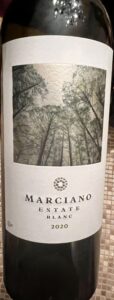
- Château LaGrange, Saint-Julien, 2019
- Château Le Crock, Saint-Estephe, 2019
- Château Malartic Lagraviere, Pessac-Leognan, Blanc, 2019
- Château Meyney, Saint-Estèphe, 2018
- Château Montviel, Pomerol, 2018
- Château Moulin Riche, Saint-Julien, 2019
- Château Valandraud, Virginie de Valandraud, 2018
- Covenant Cabernet Sauvignon, Lot 70, 2018 (also the 2018 Neshama)
- Covenant, Solomon, Sauvignon Blanc, 2020
- Domaine Chantal Lescure, Pommard, Burgundy, 2017
- Domaine du Castel, Grand Vin, 2019
- Dalton, Matatia, 2018
- Dampt Freres, Chablis, Les Preuses, Grand Cru, 2018
- Elvi Wines, Clos Mesorah, Sublim, 2016
- Elvi Wines, Herenza, Rioja, Reserva, 2016
- Flam, Reserve, Cabernet Sauvignon. 2019
- Gvaot, Gofna Reserve, Petit Verdot, 2019
 Hagafen, Prix Reserve, Cabernet Sauvignon, MJT Block, 2016
Hagafen, Prix Reserve, Cabernet Sauvignon, MJT Block, 2016- Hagafen, Family Vineyard, Red Blend, 2019
- Herzog, Generation IX, Cabernet Sauvignon, Stags Leap, 2018
- Herzog, Special Edition, Cabernet Sauvignon, Chalk Hill, 2019
- Jean-Philippe Marchand, Gevrey-Chambertin, 2019
- Jean-Philippe Marchand, Meursault, 2019
- Jean-Philippe Marchand, Nuits-Saint-George, 2019
- Jean Luc & Paul Aegerter, Hautes-Cotes de Nuits, Bourgogne, 2018
- Lueria, Gran Vital, 2018
- Marciano, Marciano Estate, Sauvignon Blanc, 2020
- Netofa, Dor, 2017
- Pavillon de Leoville Poyferre, Saint Julien, 2018
- Teperberg, Legacy, Cabernet Franc, 2018 (also the 2018 Petite Sirah)
- Tzora, Misty Hills, 2019
- Vitkin, Insight, Macabeo, 2019
- Yatir, Forest, 2016
 Moshiach wines are the really special wines that represent top-notch winemaking and plenty of patience on the consumer’s part to allow the wines the additional aging time in the bottle before the wine showcases all it can be (and the perfection intended by the winemaker). Unfortunately, as our world continues to devolve into the pursuit for instant gratification, the terrible crime of consuming high-end wines shortly after they are purchased is a crying shame. While certain top tier wines are structured for immediate consumption and long-term aging, a few years of aging nearly always does good things for these wines and is worth the extra time, effort and patience. With the continued global expansion of my Rosh Chodesh Club concept (over 30 regular monthly meetings worldwide), more and more folks and getting to experience the immense pleasure derived from properly aged mature wines and with the recognition that a few years of storage can yield a stratospheric ROI, many more wines are finding their way to the cellar instead of the table upon purchase – which is a great thing!
Moshiach wines are the really special wines that represent top-notch winemaking and plenty of patience on the consumer’s part to allow the wines the additional aging time in the bottle before the wine showcases all it can be (and the perfection intended by the winemaker). Unfortunately, as our world continues to devolve into the pursuit for instant gratification, the terrible crime of consuming high-end wines shortly after they are purchased is a crying shame. While certain top tier wines are structured for immediate consumption and long-term aging, a few years of aging nearly always does good things for these wines and is worth the extra time, effort and patience. With the continued global expansion of my Rosh Chodesh Club concept (over 30 regular monthly meetings worldwide), more and more folks and getting to experience the immense pleasure derived from properly aged mature wines and with the recognition that a few years of storage can yield a stratospheric ROI, many more wines are finding their way to the cellar instead of the table upon purchase – which is a great thing!
Please note that some of the Moshiach wines are very limited-edition wines that may not be easily available at your local retailer. While they may be a tad difficult to lay your hands on, I promise they are all worth the extra effort and additional expense. Additionally, and as is the case with many of the best wines, many become Moshiach wines only after a few years of aging. As older vintages (that have been stored properly) are somewhat difficult to come by the list includes the current vintage for many of the wines and, for a number of the wines I have included (at least one of) the vintages that makes the wine fit for the Moshiach (buy the current vintages, store them properly for a few years and voila – house-made Moshiach wines).
- Capcanes, Peraj Ha’Abib, 2009
- Château Cantenac Brown, 2018 (2015)
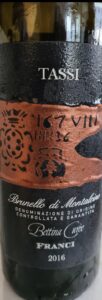 Château Giscours, Margaux, 2018 (2003)
Château Giscours, Margaux, 2018 (2003)- Château Guiraud, Sauternes, 2017 (2001)
- Château Haut Condissas, Medoc, Prestige, 2019 (2005)
- Château Lafon Rochet, Saint-Estèphe, 2017 (2003, 2010)
- Château Lascombes, Margaux, 2018 (2015)
- Château La Tour Blanche, Sauternes, 2017 (2014)
- Château Léoville Poyferré, Saint Julien, 2017 (2000, 2005)
- Château Malartic Lagraviere, Pessac-Léognan, 2018 (2005)
- Château Pontet-Canet, Pauillac, 2019 (2003)
- Château Rayne Vigneau, Sauternes, 2018 (2014)
- Château Smith Haut Lafitte, Pessac-Léognan, 2019 (2009)
- Domaine Roses Camille, Pomerol, 2014 (2005, 2012)
- ElviWines, Clos Mesorah, 2018 (2010)
- Flam, Noble, 2018 (2012)
- Four Gates, Chardonnay, 2018 (2007, 2011) [US]
- Gvaot, Masada, 2018 (2012)
- Herzog, Special Reserve, Cabernet Sauvignon, Clone Six, 2019 (2011)
- Marciano, Marciano Estate, Cabernet Sauvignon, 2018 [US]
- Tassi, Brunello di Montalcino Franci, Bettina Cuvee, 2016 [US]
- Yaacov Oryah, Old Musketeer, Sweet White Wine, 2008 [Israel / Shmita]